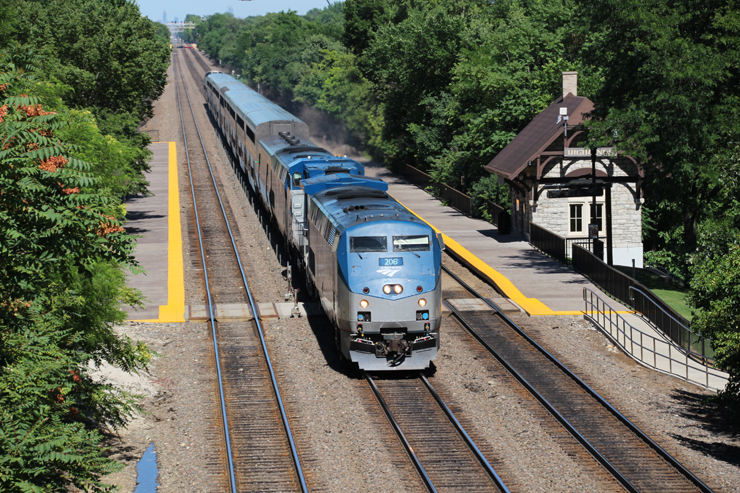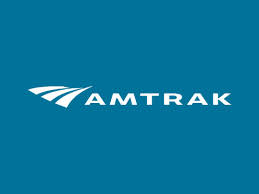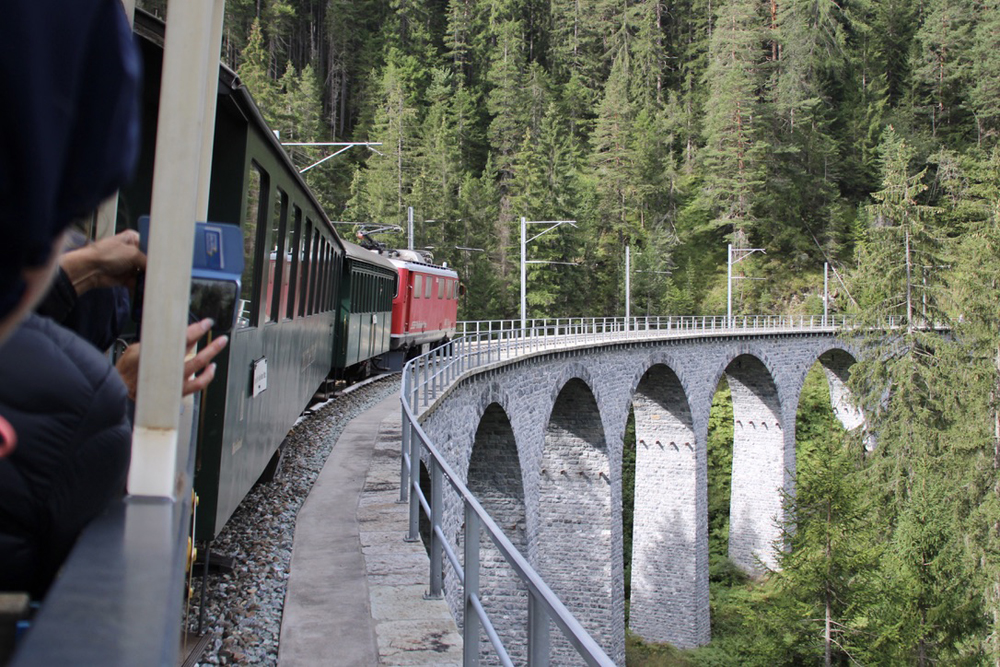WASHINGTON — Amtrak CEO Richard Anderson said his company posted “the best performance in Amtrak history” after the passenger railroad announced an operating loss of $168 million in fiscal 2018.
The loss, based on adjusted earnings — which do not include depreciation and other expenses — was an improvement of 13 percent over fiscal 2017. Amtrak’s fiscal year ended Sept. 30. Anderson, who has turned down all media interview requests since becoming CEO, made the comment in an interview with Bloomberg News.
Anderson told Bloomberg the losses would likely have been less than $100 million if not for two major accidents — the December 2017 crash of an Amtrak Cascades train in DuPont, Wash., that killed three people [see “NTSB: Amtrak ‘Cascades’ engineer applied brakes seconds before crash,” Trains News Wire, Dec. 22, 2017] and the February 2018 collision between the Silver Star and a parked CSX freight train that resulted in two fatalities. [See “NTSB: Misaligned switch directed ‘Silver Star’ into parked CSX auto rack train,” Trains News Wire, Feb. 4, 2018.]
Amtrak ridership narrowly missed a record with 31.7 million trips, while revenue increased 2.2 percent to $3.4 billion.
In a news release issued today on its financial performance, Amtrak also noted:
— — More than $51 million spent on ADA-related projects at more than 100 locations nationwide;
— — New seven-year contracts with its unions.
The company noted that regional and state-supported trains saw an increase in ridership, while long-distance trains were down 3.9 percent “due to the hundreds of trains truncated or canceled due to weather events, infrastructure outages, planned repairs, and poor on-time performance across much of the host railroad network used by Amtrak trains.”
The complete Amtrak release is available here.
— Updated 10:20 a.m. CST on Nov. 16 with additional details, link to Amtrak release.
















Maybe Ol’ Slash and Burn Anderson could put us in some cattle cars like the poor souls going to the concentration camps in WWII, that would really help the bottom line!
P.S. It wouldn’t surprise me if an e-mail or internal memo at Amtrak is found suggesting that very idea.
So, as I read this and do a LITTLE bit of math, if Amtrak were to raise fares 5%, then they would actually have a surplus! I wonder why they don’t do that?
“propeller head” putting his spin on things. As long as the shareholders are happy, it’s good, if the customers are not happy, who cares.
Spot-on Robert Ash
Why are you not commenting on reports that Amtrak is converting some of the new diners into lounge cars and perhaps seeking to sell others and the future sleepers to Via?
Amtrak could double or triple the number of passengers and through ticket revenue from the long distance trains to the NEC and State Supported trains, and it would still be inconsequential. Most of the riders on the corridor trains originate at the end points or an intermediate station along the corridor.
If the long-distance trains were discontinued, the corridor trains would do just fine. Moreover, without the financial drag imposed by the long-distance trains, Amtrak would be within shouting distance of covering its fully allocated costs.
Brightline a la Virgin Trains, is the road and model of the future. Amtrak’s NEC should be spun off to a new multi-state regional operation with the long haul trains operated by a new third party headquartered in Chicago. Amtrak as is has failed and is a failing organization regardless of the unsubstantiated numbers Amtrak throws out as to how it has cut its deficit. While it has cut its deficit as a passenger transportation company, at the same time Amtrak is and continues to be irrelevant in most parts of the country. Amtrak’s frequencies and on time performance undermines the very metrics it presents as operating performance.
Amtrak has cut connections from shorter and state supported to national network. Vermonter used to connect to the Lake Shore Limited. No longer. The Montrealer connected well to Crescent, Lake Shore, Capitol Limited, and at least one Florida train. Also. Cardinal. The changes over the years have become self fulfilling.
I was always critical that the Downeaster service didn’t connect well to the Lake Shore in Boston. Particularly with no guarantees connection eastbound.
I am not aware that Amtrak is converting any of the new dining cars to lounge cars. As I understand it, the dining cars on the Lake Shore Limited and Capitol Limited are open for first class passengers that want to eat their prepared meals there as opposed to in their room. Also, I understand there is one service attendant in the car to heat up the hot meal choice, serve it, and possibly keep the car clean. Otherwise, as far as I have read, the car still looks like a dining car as opposed to a lounge car.
What is the source of the rumor that Amtrak plans to sell some sleeping cars to VIA? I have not heard of that one.
Depreciation expense per passenger mile would show the impact for the NEC trains vs. State Supported trains vs. Long-Distance Trains. But it is still necessary to determine the source of the depreciation expense, which is the functional location of the assets.
If one knows the amount of depreciation expense that is driven by the NEC’s assets, then she could calculate the expense per passenger mile for NEC operations.
Depreciation expense per passenger mile would be a good unit albeit not the only one to assign a portion of NEC depreciation expense to the long-distance trains, e.g. Silver Star, Crescent, etc., as well as commuter and freight trains, running on the NEC. But to get there one has to know the amount of the NEC’s depreciable plant, property and equipment.
Without access to Amtrak’s books, outsiders don’t know the book value of the NEC’s depreciable assets, so there is no way to know how much of Amtrak’s depreciation expense is rooted in the NEC.
Passenger miles? Perhaps the most important metric?
Accounting includes estimates, assumptions, etc. But the notion that there is no rigor underlying them is wrong.
The amount of annual depreciation expense is based on the total cost of the asset, estimated service life, residual value, and depreciation methodology. Although there are four acceptable depreciation methods, Amtrak uses straight-line depreciation for its property, plant, and equipment.
The auditors review the depreciation schedules for reasonableness, proper support, and consistency. If they are not supported property or changed arbitrarily, the auditors will raise an audit issue.
Those who believe management can just make-up the numbers and get away with it are wrong. They show a profound ignorance of accounting methodologies.
Amtrak probably has the necessary accounting records to identify the depreciation drivers by property, plant, and equipment unit. In the case of depreciation, there is no allocation. Amtrak’s CFO probably knows where the depreciation is rooted. That Amtrak chooses to hold depreciation at the roll-up level in its Consolidated Financial Statements is a standard reporting practice.
Speaking of late, the Texas Eagle is now estimated to arrived in San Antonio at 5:11 am, November 21. If it does not lose any more time, it will arrive 7 hours 16 minutes late. It was due in San Antonio at 9:55 pm on November 20th.
I too have given up riding the Texas Eagle between San Antonio and Dallas. I don’t fancy getting into San Antonio in the wee hours of the morning, which has become the norm for Number 21.
As per Page 64 of Amtrak’s Five-Year Service Plan (2018 to 2023), in FY17 227,000 long-distance riders transferred to or from the State Supported trains, and 27,000 transferred to the NEC. The value of the ticket transfers to the State Supported trains was $5.9 million, and the value of the ticket transfers to the NEC was $1.4 million.
In FY17 the NEC had approximately 12 million riders compared to 15 million on the State Supported trains and 4.7 million on the long-distance trains. Ticket revenues for the NEC were $1.2 billion compared to $500 million for the state supported trains and $504 million for the long-distance trains.
In FY17 1.5 percent of the State supported riders had transferred from the long-distance trains. Their ticket transfer values were 1.18 percent of the state supported ticket revenues. For the NEC the numbers were 22/100s of one percent and 11/100s of one percent.
The long-distance trains could be terminated tomorrow and the impact on the state supported and NEC trains would go largely unnoticed. The transferability argument is just one more myth regarding the importance of the long-distance trains to Amtrak’s so-called national network.
Mr. Smith,
Eliminate the LD passenger service and AMTRAK will have to realize how much the Corridors actually lose. They don’t smaller money, and neither do the regionals, when strict accounting principles are applied.
Amtrak can be as boastful as they want to be. Then the truth comes along. On the Northeast Corridor, there are DAILY occurrences of signals that don’t work, switches that don’t work, and catenary issues, which delay hundreds, if not thousands of Amtrak riders on a daily basis, as well as the commuter agency tenants using their tracks. So, Mr. Anderson, all is certainly not well, and the issuance of these glowing reports from the ivory tower are certainly not accurate.
The article forgot to mention how they lost my business on the Lake Shore Limited due to poor on time performance and the terrible boxed food.
The point was whether Amtrak adheres to GAAP for financial reporting purposes. It does.
Allocation of overheads is a management or cost accounting exercise. While it is not an integral part of the external audit of the company’s financial statements, the external auditors review the internal controls associated with allocations to ensure themselves that they are reasonable.
I worked for a Fortune 200 Corporation as a senior accounting manager and Director of Internal Audit. Our external auditors, who spent a significant part of the year camped out in our offices, paid close attention to the internal controls governing the allocation of overheads, depreciation, etc.
Amtrak is not required to report the allocation of depreciation. It can hold it at the corporate level. Whether it allocats it internally for management and costing is unknown, although it probably has the property accounting records to know how much of the depreciation is driven by the NEC, etc.
One thing is certain. None of the people posting to Train’s blogs and/or forums has access to Amtrak’s books. And therefore they don’t have a clue as to how much depreciation should be assigned to the NEC vs. State Supported trains vs. the long-distance trains. Equally important, they don’t have clue as to how Amtrak allocates its overhead expenses, i.e. IT, Marketing Management, Accounting & Finance, etc.
In FY17 the NEC had an operating profit of $472 million. The company had unallocated expenses that netted to $797 million. Of this amount depreciation was $790.6 million. If all of the depreciation was allocated to the NEC, which would be improper, the fully allocated loss for the NEC would have been $325 million compared to $98 million for the State Supported trains and $500 million for the long-distance trains. If 80 percent of these expenses fell on the NEC, with 10 percent each allocated to the State Supported trains and long-distance trains, it would have had a fully allocated loss of $166 million compared to $177 million for the State Supported trains and $580 million for the long-distance trains.
How much of Amtrak’s depreciation is driven by the NEC vs. State Supported vs. Long-distance? I don’t know. Neither does anyone else outside of Amtrak, with the possible exception of the external auditors and FRA, DOT and GAO. But even if Amtrak allocated all of its depreciation to the NEC, the outcome would be better than the outcome for the long-distance trains.
The problem with accounting is that it is far from black and white. Mr. Seldon’s larger point is that Amtrak’s accounting makes it look like the long distance trains do badly (largely based on the allocation of overhead costs), while ignoring the capital costs incurred by the northeast corridor. This is not a fact that you can argue against by pointing to the audit of Ernst & Young, this is a subjective policy disagreement. At root are two questions:
– How do you allocate system costs (like headquarters costs, the reservation systems, shops, etc)?
– Is it reasonable to exempt depreciation and capital costs when evaluating Amtrak performance?
Allocating system costs on a per rider basis produces different results than allocating it on a per passenger mile basis and different still from a per revenue dollar basis. There are system winners and losers each way.
Another problem here is if you allocate system costs to incremental expansions, they seem like losers even when improving the bottom line. That is, the additional revenue from an expansion might be larger than the additional revenue, yet when you re-allocate the system expenses, the expansion that improved overall financial performance is book as money-loosing (even though system costs didn’t increase).
There are winners and losers in exempting depreciation and capital expenditures too. The national system is essentially depreciated already, but the NEC isn’t, so if depreciation and capital expenses was part of the measurement, the long distance trains would look much much better than the NEC. However the choice not to include depreciation and capital makes it easier to get Amtrak to a point of no longer having operating losses, which removes the largest political problem the cause faces (from one point of view. I believe the largest political problem Amtrak faces is that it doesn’t serve enough places and therefor doesn’t have broad enough support in congress).
Christopher
Andrew Selden has been at it a lot longer than most of us put together. Despite your source, Mr. McGuire, I’d listen to what he has to say.
An Amtrak supporter once told me not to pay any attention to anything that Andrew Selden says because he doesn’t know what he is talking about and is not very well thought of in the railfan and rail supporter community in the area in which he lives. After reading some of his more recent comments I tend to believe this person.
“In our opinion, the financial statements referred to above present fairly, in all respects, the consolidated financial statements of National Railroad Passenger Corporation and subsidiaries at September 30, 2017 and 2016, and the consolidated results of their operations and their cash flows for the years then ended in conformity with U.S. generally accepted accounting principles.”
Ernst & Young LLP, Report of Independent Auditors, Page 2, Paragraph Opinion, January 26, 2018.
It is possible that E&Y does not understand Amtrak’s accounting but I would not be the farm on it.
Paul Smith,
You’re factually wrong in your statement, it’s been a proven that Amtrak does not use GAAP accounting methods, if you’ve ever seen the many written analyses of how they do cost allocation you’d know that. Just do a simple Google search for Amtrak accounting methods, I’m sure you’ll find plenty of sources.
Mr. Selden,
Without access to Amtrak’s books, you don’t how much of the $1.46 billion in capital investment was for the NEC.
If some or all of the money were used to maintain or upgrade the NEC, as long as it extended to life of the assets, which usually the case for significant spends, the cost of the upgrades would flow through the financials as depreciation expense over the estimated service lives of the assets as adjusted because of the maintenance and/or upgrades. And if you are familiar with the estimated lives of Amtrak’s fixed assets for depreciation purposes, that is a long, long time.
It is permissible for corporations reporting consolidated financial results to hold depreciation, etc. at the corporate level and not report it by segment. Mr. Anderson made it crystal clear that he was reporting operating results, and they do not include depreciation or other expenses below operating income results. I suspect Amtrak, through its property accounting records, knows how much depreciation is chargeable to the NEC vs. other segments of its infrastructure. If would be nice if they made the information available, but they don’t.
Speculating about accounting issues that you don’t have insight into is not helpful.
Perhaps former Rep. Mica was indeed prescient?
Who and when was it decided that Amtrak would fog its financial data and skewer financial data and material performance information? Why does this remind me of LBJ and his administration’s effort to distort fact re the bombing campaign over North Vietnam, s well as our efforts on the ground in South Vietnam.
Still too many rail buffs willingly to forgo the fiasco of Amtrak–how pathetic!
WE can only look forward to the eventuality of Brightline’s relationship with Virgin that will eventually develop rail corridors ignored by Amtrak. Down the road, the monopolistic wall set-up by Amtrak will be torn down; competitive rail corridors will evolve.